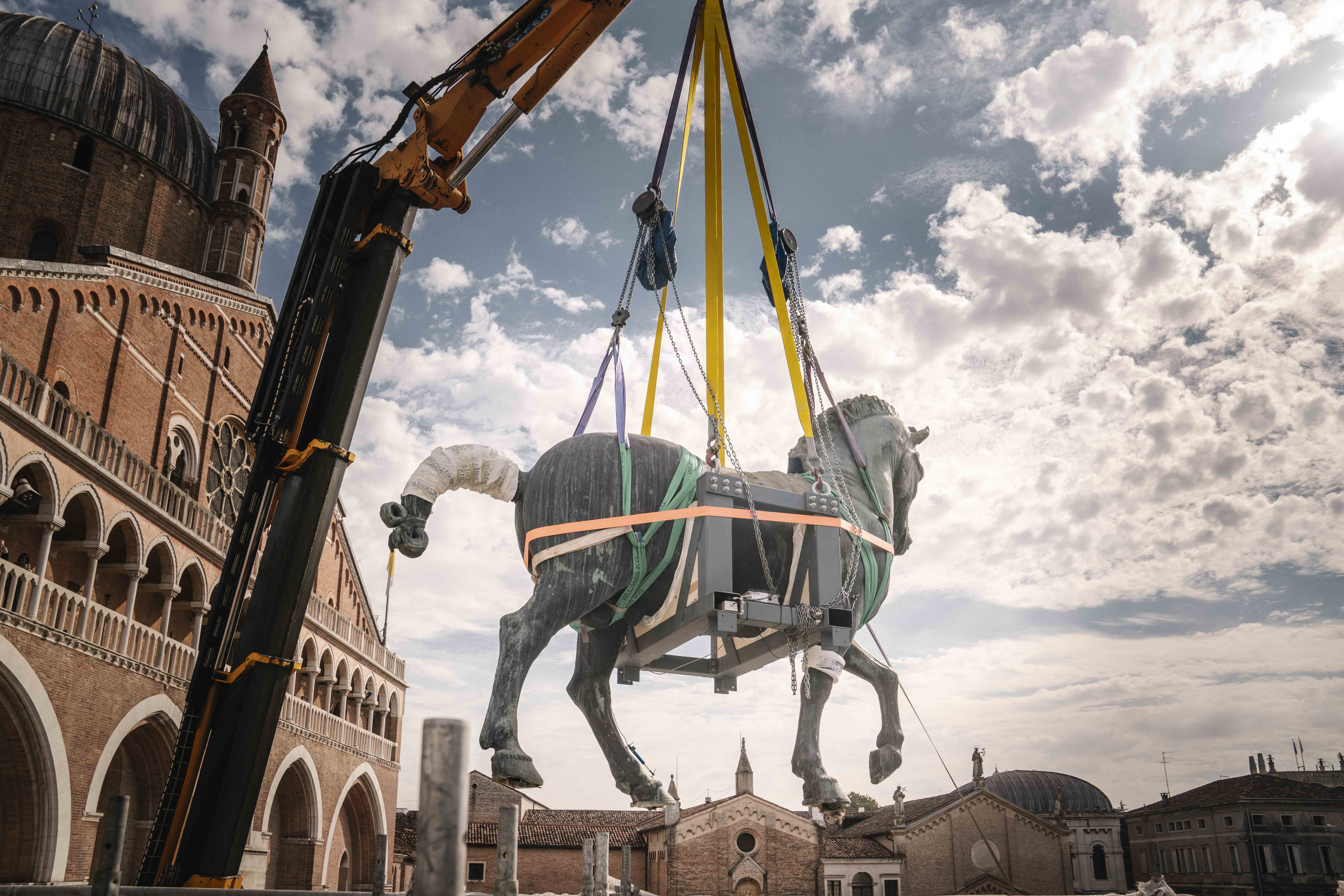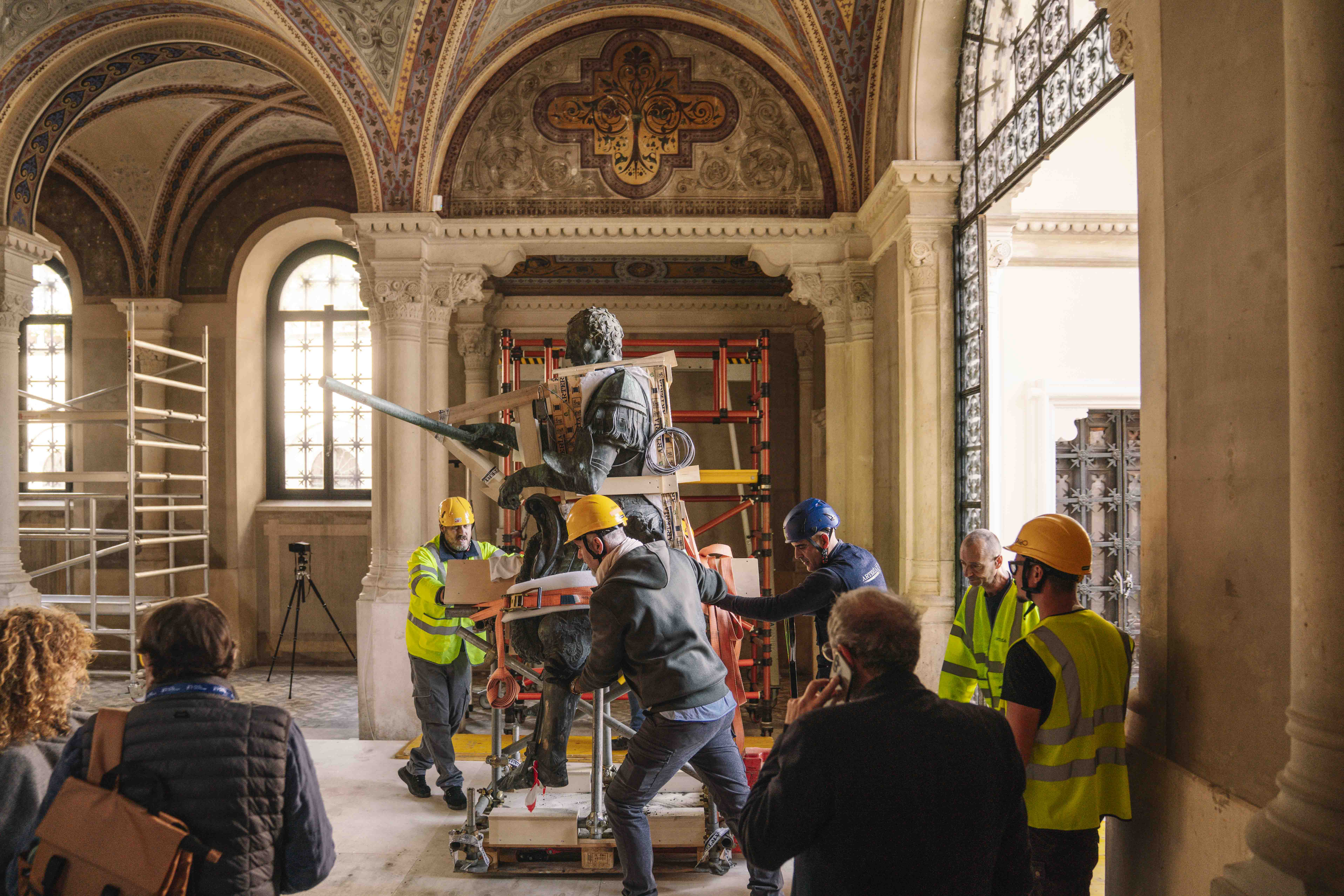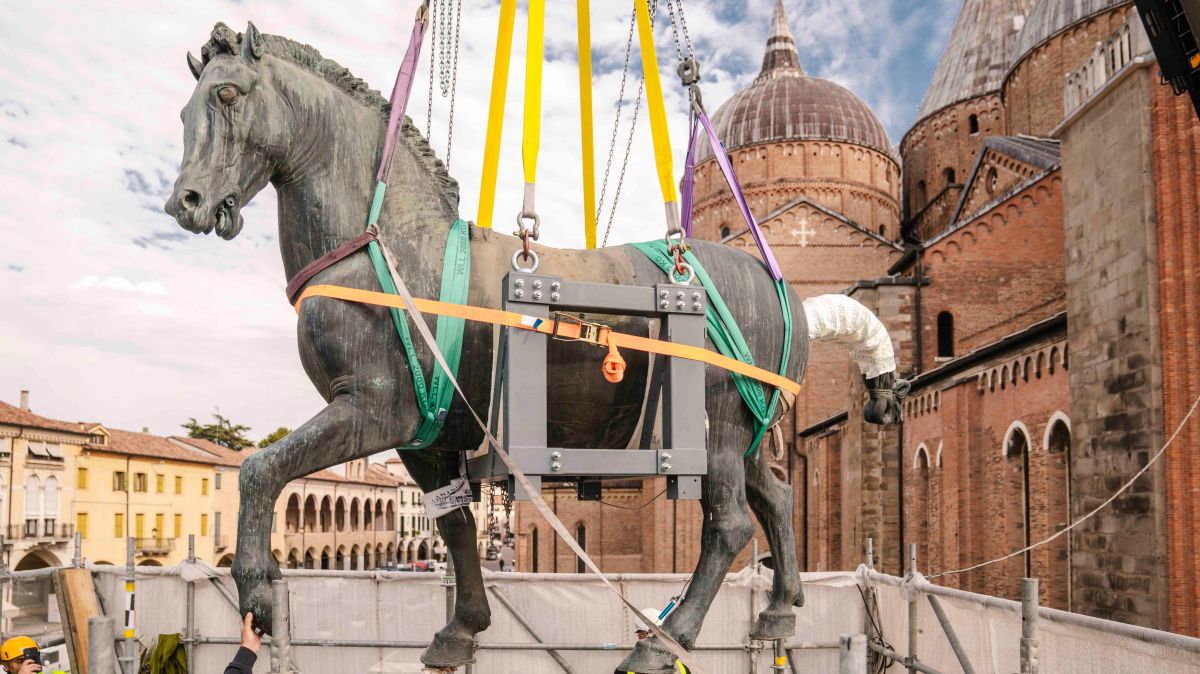Almost 600 years ago, Donatello revolutionised the world of sculpture, reviving the grandeur of bronze equestrian statuary, with a monument that embodied the ideals of the Renaissance.
Towering over a central square, the 11m-tall Gattamelata statue, completed in 1453, has been the pride of Padua, in northern Italy. Before last week, it had left its piazza only twice, for safekeeping during the two world wars.
Now, Gattamelata has been moved indoors for restoration after centuries of corrosion. The monument was hoisted from its 8m plinth over two days last week in a €2 million operation funded by two US-based heritage organisations and relocated 70m away to a former museum. “It is the last Donatello displayed outside in the entire world,” Nicola Salvioli, a restorer, said.

The statue was moved over a 48-hour period
MARCO BORRELLI
Cast in 36 pieces and weighing 450kg, the statue depicts Erasmo da Narni, a 15th-century condottiero nicknamed Gattamelata (“honeyed cat”) for his stealthy attacks, sitting on a horse with one hoof on a cannonball.
Concerns over “bronze disease”, in which chloride, oxygen and moisture form corrosive green spots, emerged in 2022, prompting experts to propose taking the original indoors and replacing it with a replica.
The plan faced fierce criticism from Vittorio Sgarbi, then a junior culture minister, who vowed to block the removal unless the statue’s survival was at risk.
Instead, scaffolding was erected for a preliminary analysis of its condition. Salvioli said that when it rained, a “small lake” of water collected inside the horse’s belly. He added that the heritage officials’ rush to return monuments to their original locations in 1945 had caused it to become unbalanced, leaving the horse leaning on its front hooves.

The knight makes it safely into the building where it will be restored
MARCO BORRELLI
To remove the work, he said, it was harnessed and moved incrementally over 48 hours with hydraulic and manual equipment in a “surgical” operation to prevent bronze pieces becoming detached and the statue’s stone base splitting.
Now in the museum’s grand former entrance, it awaits further analysis using georadar and ultrasound, partly to study Donatello’s construction method including his use of silver and gold.
Salvioli said the restoration could start within six months and take a year and a half. He added: “When we are not working on Friday, Saturday and Sundays, the space will be open to the public.”
While its long-term display location remains undecided, a museum setting would allow closer appreciation of Donatello’s craftsmanship, Salvioli said. “It is rich in magnificent details just a few centimetres in size that cannot be seen when it towers above the square.”

